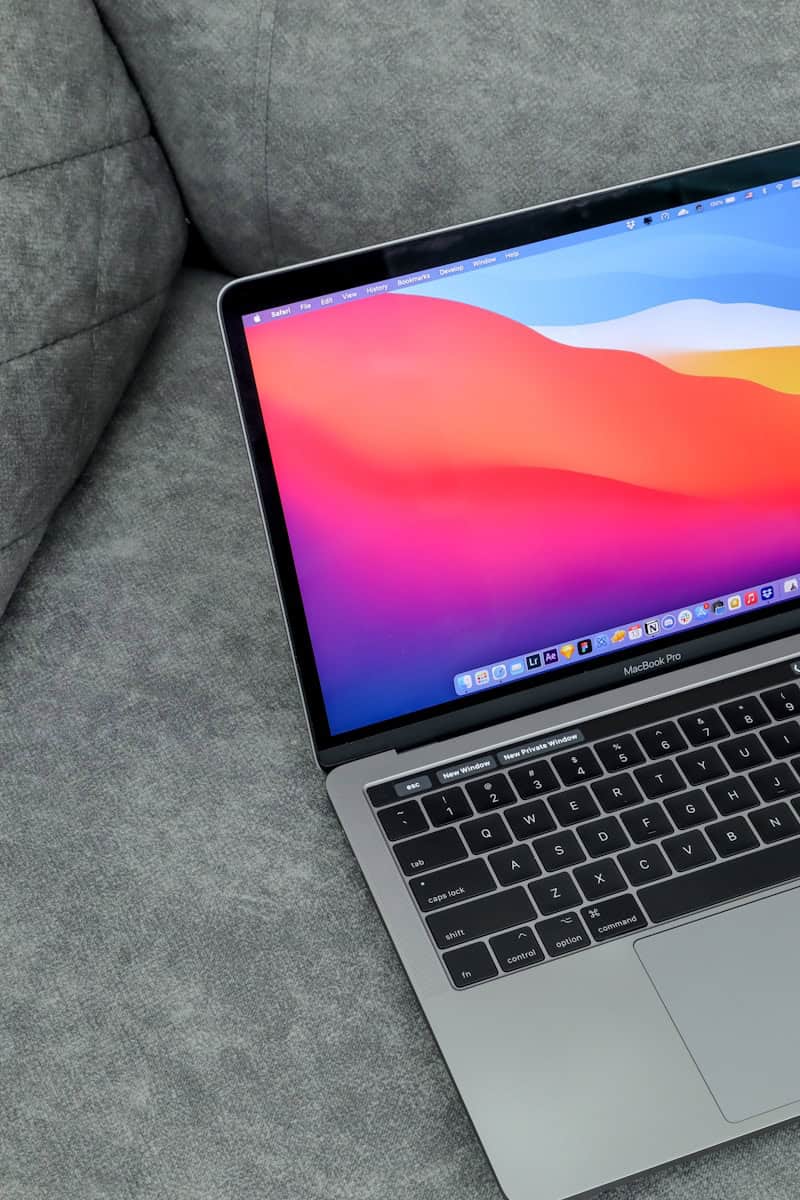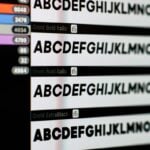Is your MacBook Pro suddenly silent? You’re not alone. Many Mac users face sound problems that can stop music, videos, and calls from working properly. Fixing sound issues on your MacBook Pro often requires just a few simple steps like checking volume settings, restarting your computer, or unplugging and reconnecting headphones.
Sound problems can happen for many reasons. Sometimes it’s a software glitch or wrong settings. Other times, it might be dust in the headphone port or a hardware issue. The good news is that most sound problems have easy fixes that don’t need a trip to the Apple Store.
Before trying complex fixes, start with the basics. Make sure your volume isn’t muted, check which output device is selected, and verify the app you’re using has its volume turned up. These quick checks solve most sound issues right away.
How to Fix Sound Issues on a MacBook Pro
Sound not working on your MacBook Pro? Whether it’s no audio at all, distorted sound, or output going to the wrong device, audio problems on macOS can be frustrating. Here’s a step-by-step guide to diagnosing and fixing sound issues on your MacBook Pro.
1. Check the Volume and Output Settings
Before diving into deeper troubleshooting, start with the basics:
- Click the volume icon in the menu bar and make sure the volume isn’t muted or too low.
- Go to System Settings > Sound (or System Preferences > Sound on older macOS versions).
- Under the Output tab, ensure the correct device is selected—this should typically be “MacBook Pro Speakers” unless you’re using external speakers or headphones.
If the wrong device is selected (like AirPods or a monitor), switch to the correct one manually.
2. Restart Core Audio
The Core Audio service handles sound on macOS. If it’s glitched, restarting it can help:
- Open Terminal (use Spotlight with
Command + Spaceand type “Terminal”). - Type the following command and press Return:
sudo killall coreaudiod - Enter your Mac’s administrator password.
- Core Audio will restart automatically. Check your sound again.
3. Disconnect and Reconnect Audio Devices
- If you’re using Bluetooth headphones or speakers, disconnect and reconnect them through System Settings > Bluetooth.
- For wired headphones or USB audio devices, unplug and plug them back in.
- Try rebooting the Mac with those devices already connected.
4. Reset NVRAM/PRAM
Your Mac’s Non-Volatile RAM stores audio settings, among other things. Resetting it can fix persistent audio problems.
For Intel-based Macs:
- Shut down your Mac.
- Power it on and immediately hold down
Option + Command + P + R. - Keep holding for about 20 seconds, then release.
Note: Apple silicon Macs don’t have a manual NVRAM reset, but rebooting handles the equivalent automatically.
5. Boot into Safe Mode
Safe Mode can help diagnose software conflicts:
- For Apple Silicon Macs:
- Shut down the Mac.
- Press and hold the power button until startup options appear.
- Choose your startup disk, then hold Shift and click Continue in Safe Mode.
- For Intel Macs:
- Restart and hold Shift as the Mac boots.
Test sound in Safe Mode. If it works, the issue may be caused by third-party software or extensions.
6. Update macOS
Software bugs can impact audio. Go to System Settings > General > Software Update and install any available macOS updates.
Even small updates often contain fixes for hardware-specific glitches.
7. Run Apple Diagnostics
Apple’s built-in diagnostic tool can check for hardware issues:
- Shut down your Mac.
- Turn it back on and immediately hold D.
- Keep holding until diagnostics begin.
- Follow the prompts and review any error codes related to audio hardware.
8. Check for Third-Party Apps or Audio Extensions
Apps like Soundflower, Rogue Amoeba’s Loopback, or old audio drivers can interfere with sound output:
- Go to Applications > Utilities > Audio MIDI Setup and review all audio devices.
- Disable or remove unused third-party audio plugins or extensions.
9. Create a New User Profile
Corrupt user settings can sometimes affect system behavior:
- Go to System Settings > Users & Groups.
- Create a new standard user.
- Log into that account and test your audio.
If it works there, the issue is likely tied to your main user account settings or preferences.
10. Contact Apple Support or Visit an Apple Store
If none of these steps fix the issue, it could be a hardware problem with the speakers, sound chip, or logic board. In that case, schedule a visit to the Genius Bar or contact Apple Support.
By going through these steps, most MacBook Pro audio issues can be identified and resolved—whether it’s a simple misconfigured setting or something more involved like software conflicts or hardware failure.
Key Takeaways
- Check volume settings and try a reset of your Mac’s NVRAM to fix most common sound problems.
- Make sure the correct output device is selected in Sound settings and test with different apps.
- Clean your headphone port and run system updates before assuming you need professional repairs.
Initial Troubleshooting Steps
When your MacBook Pro suddenly goes silent, a few simple checks can often solve the problem without complicated fixes or trips to the repair shop. First, let’s look at the basic settings that control your Mac’s sound output.
Check System Preferences
Start by checking your volume level. Click the volume icon in the menu bar or press the volume up key several times. If you see the volume display but hear nothing, there might be other issues to address.
Next, check the sound settings on your Mac. Open System Preferences, then click Sound. In the Output tab, make sure “Internal Speakers” is selected.
Check that the Output volume slider isn’t set to mute or very low. The “Mute” checkbox should be unchecked.
Some apps have their own volume controls. If only one app has no sound, check its volume settings before assuming there’s a system-wide problem.
Verify Internal Speakers Functionality
If you’ve recently used headphones or external speakers, your Mac might still be trying to send audio there. Disconnect all external audio devices from your MacBook Pro, including Bluetooth headphones and speakers.
Restart your MacBook Pro. This simple step often fixes temporary glitches affecting sound output.
Try resetting Core Audio, the software that manages sound on your Mac. Open Terminal from Applications > Utilities, then type: sudo killall coreaudiod and press Enter. Enter your password when prompted.
Run a sound test by playing something simple like a system sound. Go to System Preferences > Sound > Sound Effects and click on any sound effect to test.
System Checks and Updates
Making some important system changes can fix sound problems on your MacBook Pro. These fixes focus on keeping your system up-to-date and restarting key audio processes.
Update MacOS
Keeping your MacOS current is crucial for sound functionality. Apple regularly fixes sound issues through system updates.
To check for updates:
- Click the Apple menu in the top-left corner
- Select “System Settings” or “System Preferences”
- Click “Software Update”
- Install any available updates
If an update is available, connect to power and back up your Mac before installing. Updates can take 30-60 minutes depending on your internet speed.
Some sound problems happen because of outdated drivers that new updates fix. If your Mac has been running an old version for months, this alone might solve your problem.
Restart Coreaudiod Process
The coreaudiod process manages all sound on your Mac. When it crashes or gets stuck, your speakers might stop working. Restarting this process often fixes sound problems without a full restart.
- Open Terminal (find it in Applications > Utilities)
- Type:
sudo killall coreaudiod - Enter your admin password when asked
- Wait about 10 seconds for the process to restart
Your Mac’s sound system will reset without restarting the whole computer. This quick fix works for many users experiencing sudden sound loss or distortion.
Try playing audio after the process restarts. If sound returns, the problem was with the audio service rather than hardware.
Hardware Diagnostics
When your MacBook Pro has sound problems, it might be due to a hardware issue. Running tests can help find what’s wrong with your speakers or audio components before trying more complex fixes.
Checking External Devices
First, unplug all external devices connected to your MacBook Pro. Headphones, USB hubs, or Bluetooth speakers can sometimes interfere with sound output. After disconnecting everything, check if your speakers work.
You can use Apple Diagnostics to test for hardware problems. To run this test:
- Shut down your MacBook Pro completely
- Press the power button to turn it on
- Immediately press and hold the D key until the diagnostic screen appears
For M1 MacBook Pro models, the process is slightly different. Turn off your Mac, then press and hold the power button as it starts up until you see startup options. Select “Apple Diagnostics” from the menu.
The test takes 2-5 minutes and will show if there’s a problem with your MacBook Pro speakers or audio hardware. If it finds issues, you’ll see error codes that point to specific problems.
Advanced Solutions
When basic fixes don’t solve your MacBook Pro sound issues, it’s time to try more technical approaches. These methods can often resolve deeper system problems affecting your audio output.
Reset NVRAM
NVRAM (Non-Volatile Random Access Memory) stores certain settings on your Mac, including sound volume. When sound problems persist, resetting NVRAM can often fix them.
To reset NVRAM on your MacBook Pro, follow these steps:
- Shut down your MacBook Pro completely
- Press the power button to turn it on
- Immediately press and hold these four keys together: Option + Command + P + R
- Hold the keys for about 20 seconds
Your MacBook will appear to restart during this process. If you hear the startup sound twice or see the Apple logo appear and disappear twice, it means the NVRAM reset is complete.
After the reset, you may need to readjust some settings like screen resolution, time zone, and volume settings. Check if your sound is working properly now.
This technique fixes many mysterious audio problems by clearing corrupted settings that could be blocking proper sound function.
Frequently Asked Questions
Many MacBook Pro users face sound issues that can often be fixed with simple solutions. Here are answers to some of the most common audio problems.
How can I troubleshoot the absence of sound on my MacBook Pro?
First, check your volume settings by adjusting the output volume slider and making sure the Mute option isn’t selected.
Next, verify that your Mac is using the correct output device. Click the sound icon in the menu bar or go to System Preferences > Sound > Output.
If these basic steps don’t work, try unplugging all external devices like USB hubs or docks that might be interfering with your audio settings.
What should I do when my MacBook Pro’s speakers are not functioning, but headphones are working?
Check your sound settings to confirm internal speakers are selected when headphones are unplugged. Go to System Preferences > Sound > Output.
Sometimes dust or debris in the headphone jack tricks your Mac into thinking headphones are still connected. Try gently inserting and removing headphones several times to dislodge any particles.
If that fails, resetting the NVRAM might help. Shut down your MacBook, then restart while holding Option+Command+P+R until you hear the startup sound twice.
How is the MacBook Pro’s crackling speaker issue resolved?
MacBook Pro crackling sounds often occur due to software issues. Try restarting your Mac as this clears temporary audio bugs.
For M1 MacBooks especially, crackling is a known issue that may be fixed by updating to the latest macOS version.
If problems persist, try booting in Safe Mode to check if third-party software is causing the issue. Hold the Shift key during startup to enter Safe Mode.
Why do my MacBook’s built-in speakers fail to appear in the sound settings?
This often happens due to a software glitch. Restart your Mac to refresh the audio system.
Try running Maintenance Scripts to fix underlying system issues. CleanMyMac X or similar tools can run these scripts, or use Terminal commands if you’re comfortable with them.
If your speakers still don’t appear, create a new user account on your Mac and check if the issue persists there. This helps determine if it’s a user profile problem.
What steps should be taken to reset the audio system on a MacBook?
Restart the core audio service by opening Terminal and typing: sudo killall coreaudiod. Then press Return and enter your password when prompted.
Reset the NVRAM by shutting down your Mac and turning it on while holding Option+Command+P+R for about 20 seconds.
For persistent issues, try creating and using an audio MIDI setup. Open the Audio MIDI Setup app from Applications > Utilities and configure a new multi-output device.
What can be done to address distorted audio on a MacBook?
Lower the volume if you’re experiencing distortion at high levels. MacBook speakers can distort when pushed too hard.
Check for conflicting audio apps or browser tabs playing sound simultaneously. Close unnecessary applications.
Try disconnecting all peripheral devices that might be causing audio interference, including external displays, USB hubs, and Bluetooth devices.







